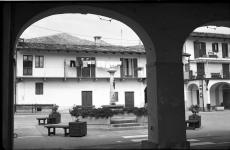|
Bolsey B3 |
Manufactured or assembled in USA from (Circa) 1956 to (Circa) 1956.
Index of rarity in France: Rare (among non-specialized garage sales)
Inventory number: 14484
See the complete technical specifications
Chronology of cameras Bolsey
In the late 1940s, Jacques Bolsey, an American citizen living in New York, filed several patents in different countries for a camera and its features. 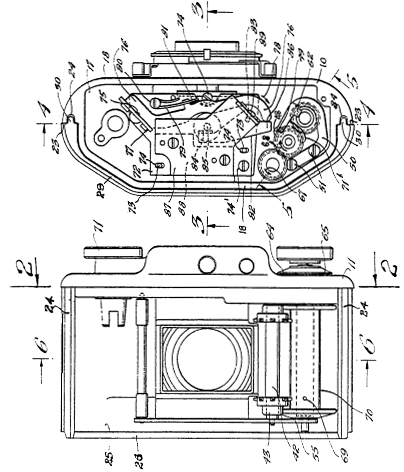 The silhouette is that of the Bolsey B. When viewed from the top, it has a trapezoidal shape, which became the signature of the Bolsey B and C series. These are 35mm rangefinder cameras made entirely of metal. Some models have a chest-level viewfinder, and they are called the C models.
The silhouette is that of the Bolsey B. When viewed from the top, it has a trapezoidal shape, which became the signature of the Bolsey B and C series. These are 35mm rangefinder cameras made entirely of metal. Some models have a chest-level viewfinder, and they are called the C models.
According to Jim McKeown, all American Bolsey cameras were manufactured by Obex Corporation of America, which began distribution in June 1956.
When Bolsey ceased its activity, starting in 1957, Obex continued to produce the Jubilee camera under the name Festival for Wittnauer.
The Bolsey B2 is identical to the 1947 B model but features protection against double exposures and flash synchronization.
The B22 is a B2 with the Set-O-Matic system, featuring a different back with a plate for Set-O-Matic use.
The C is a twin-lens reflex (TLR) camera, with the upper housing integrating the reflex viewfinder, while the rangefinder and viewfinder are offset.
The C22 is a C model with the Set-O-Matic system, which results in a modified back.
The B3 is a redesigned version of the B, featuring a black anodized finish instead of shiny metal. The top cover is secured with screws instead of a lever, and it includes a top-mounted shutter release button and a frame counter reset button. It has a single flash attachment hole and contact. The lens is a Steinheil, mounted on a Gauthier shutter. The top cover no longer features the red round logo but a coat of arms.
The Jubilee is a polished and shiny B3 with the Set-O-Matic system. The Set-O-Matic backplate is surrounded by a raised rim, and the top cover decoration is specific to this model.
The Wittnauer Festival is a Jubilee camera with a black B3 body, and the upper trim and Set-O-Matic plate bear the Wittnauer brand. Two small black bakelite eyepieces have been added to the viewfinder lenses.
To summarize this information in a comparative table:
| Front face | ||||
| 1 | 2 | 3 | ||
 |
 |
 |
||
| Back | ||||
| 1 | 2 | 3 | 4 | 5 |
 |
 |
 |
 |
 |
| Top housing | ||||
| 1 | 2 | 3 | ||
 |
||||
| Decoration | ||||
| 1 | 2 | 3 | 4 | 5 |
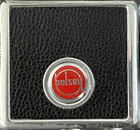 |
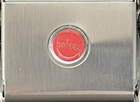 |
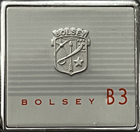 |
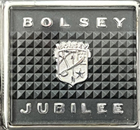 |
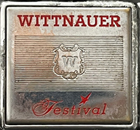 |
| Base locking | ||||
| 1 | 2 | |||
 |
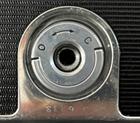 |
|||
| Flash sync socket position | ||||
| 1 | 2 | 3 | ||
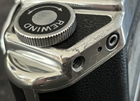 |
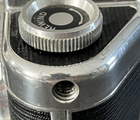 |
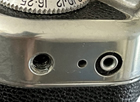 |
||
| Lens and shutter | ||||
| 1 | 2 | |||
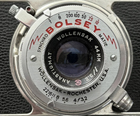 |
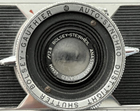 |
|||
| Anastigmat Wollensak 3.2/44 + Wollensak 1/10 à 1/200, B |
Steinheil 2.8/45 + Gauthier Auto Synchro 1/10 à 1/200, B |
|||
| Years | Body Design | Top housing | Base locking | Lens and shutter | ||||||
| Front | Face | Shape | Decoration | Brand, model | Synchro Flash | |||||
| Bolsey B |  |
1947 | 1 | 1 | 1 | 1 | 1 | 1 | ||
| Bolsey B2 |  |
1949 | 1 | 2 | 1 | 1 | 1 | 1 | 1 | |
| Bolsey B22 |  |
1953 | 1 | 3 | 1 | 1 | 1 | 1 | 1 | SET-O-MATIC |
| Bolsey B3 | 1956 | 3 | 2 | 2 | 3 | 2 | 2 | 2 | Reset and shutter release on top | |
| Bolsey Jubilee |  |
1956 | 2 | 4 | 2 | 4 | 2 | 2 | 2 | SET-O-MATIC Reset and shutter release on top |
| TLR | ||||||||||
| Bolsey C |  |
1950 | 1 | 1 | 3 | 2 | 1 | 1 | 3 | |
| Bolsey C22 |  |
1953 | 1 | 3 | 3 | 2 | 1 | 1 | 3 | SET-O-MATIC |
| other brand | ||||||||||
| Wittnauer Festival | 1957 | 3 | 5 | 2 | 5 | 2 | 2 | 2 | SET-O-MATIC Reset and shutter release on top |
|
In 1956, the Bolsey B3 succeeded the Bolsey B2, which was introduced in 1949.
The body underwent a redesign and no longer had the shiny polished finish but instead featured a black anodized finish. The shape and covering material were modernized, the focus ring now had two levers, and the shutter release was relocated to the top cover.
The lens was a 2.8/45 mm Steinheil mounted on a Gauthier shutter.
The top cover was no longer beveled on the left side, and it had a threaded hole to accommodate and synchronize a dedicated flash on the right. It was equipped with a knurled button for resetting the frame counter.
The rear cover was secured in its lower part by a threaded socket, which was non-removable and had a maneuvering ring. This socket was positioned around the threaded hole for attaching a tripod. The depth of field scale disappeared.
In 1956, Bolsey went bankrupt, and as a result, the B3 was not widely distributed.
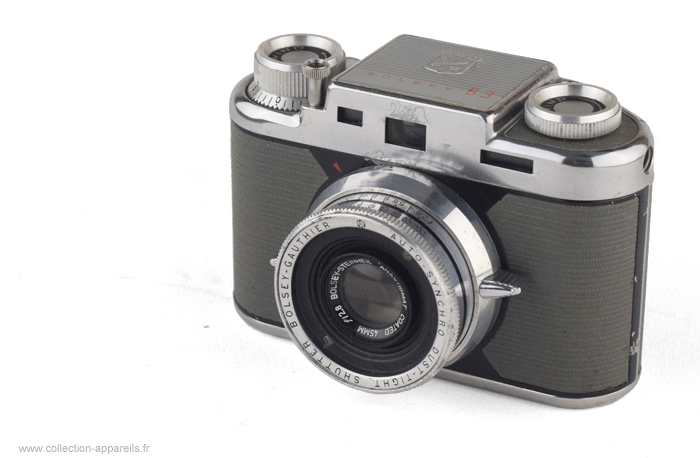
Interesting links or bibliography :
Add a link or element of bibliography, a picture taken with this camera, a picture of box or an ads about this camera
Your photos taken with the same camera:
Cameras from Ebay France (Bolsey) (Uploaded each 3 hours)







